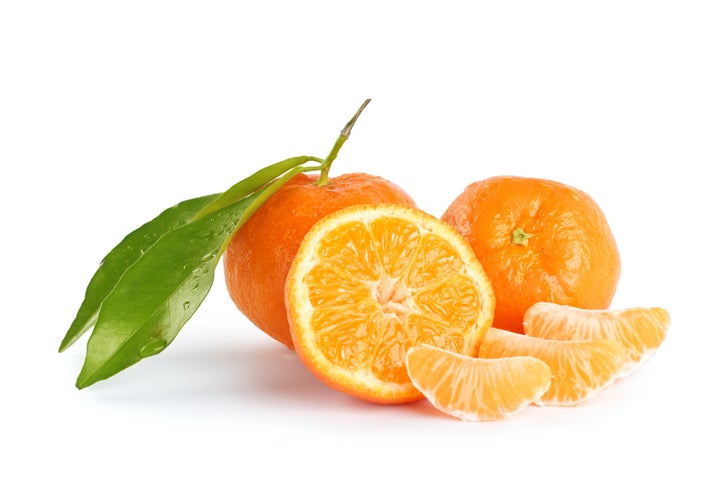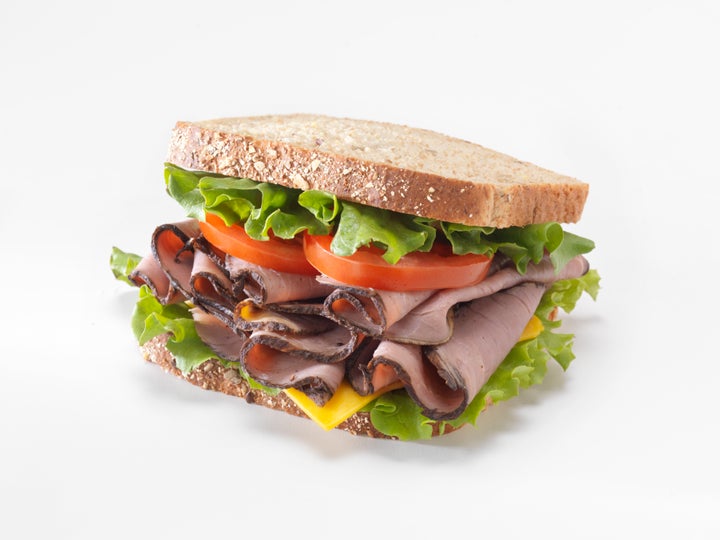Children’s academic performance (and overall happiness) in a school environment relies on a wide range of factors, and proper nutrition plays a crucial role.
In addition to needing well-rounded breakfasts and healthy snacks, kids of all ages require lunches that both satisfy them and provide them with the fuel to power them through an eight-hour school day (plus any after-school activities). Certain lunch foods can even help kids maintain their focus throughout the school day, therefore maximising their academic potential.
We asked nutritionists which foods they’d most recommend for school lunches geared toward productivity, and they offered these seven flavourful and nourishing suggestions.

1. Oranges
If your kid enjoys fruit, an orange makes an ideal school snack or lunch ingredient. “Oranges are a fantastic source of vitamin C, which is not only an antioxidant, but has also been shown to improve focus, concentration and memory,” explained Matt Scarfo, a certified trainer who specialises in fitness nutrition. “In fact, in just one regular sized orange, you can get nearly an entire day’s worth of your recommended vitamin C intake, which makes them a good option for a simple, easy snack to toss in a lunchbox that’s power-packed with nutrients.” Vitamin C also supports a healthy immune system, which is more important than ever as kids head back to school these days.
“Focusing and concentrating is a challenge on its own when kids are healthy; it’s even more difficult if they’re dealing with the symptoms of a cold or flu, and especially tough if they have to work extra hard to catch up after missing days,” Scarfo noted. “Getting the proper micronutrients from a healthy, whole-food snack such as an orange is a great way to prevent that risk.”
As an alternative, you could consider sending your child with a container of orange juice, as long as it’s 100% orange juice with no added sugar. “Including 100% OJ as a beverage provides kids with key nutrients like vitamin C,” said Lauren Manaker, a registered dietitian and cookbook author. “Plus, data shows that kids who drink 100% OJ tend to have higher physical activity levels versus non-OJ drinkers.”
2. Canned Salmon
With its emphasis on plant-based foods and omega-3 fatty acids, the Mediterranean diet is a huge hit among adults seeking a healthier lifestyle. Luckily, many of the same principles of the Mediterranean diet also apply to school lunches that can boost academic focus.
Specifically, dietitian Monica Auslander Moreno said that canned salmon “would offer benefits related to cognition and brain development, which could then confer benefits onto school performance.” She suggests spreading it on sprouted bread with diced celery, onions and mustard.
“Salmon is one of the fish with the highest concentration of omega-3 fatty acids ― and canned salmon is a great lower-mercury alternative to canned tuna,” Moreno added. “Omega-3 fatty acids are crucial for growing brains. The addition of onions and celery would offer prebiotic fibres to nourish the gut microbiome probiotic and potentially support the immune system, and a smear of mustard may fight inflammation from its contained turmeric. The sprouted bread is a great choice as far as nourishing fibre and B vitamins and less added sugar than traditional grocery store bread.”

3. Roast Beef
An ideal school lunch includes a balanced array of items from different food groups, including healthy carbohydrates, fruits, vegetables and protein. Protein can be accessed through many different foods, but nutritionist Brenna Thompson especially recommends roast beef for school kids.
“There are two minerals that kids need for good focus: iron and zinc. Many kids are deficient in these. A great source of both is beef. Send kids with a roast beef sandwich or pita pocket to give them a good balance of protein and carbohydrates,” Thompson said.
4. Walnuts and fresh blueberries
As an easy and tasty alternative to store-bought trail mixes (which often appear in school lunches), paediatric nutritionist Aubrey Phelps recommends a blend of walnuts and fresh blueberries.
“This makes for a great snack or lunch addition,” she said. “The healthy omega fats in the walnuts are great for brain health, and the fat and protein keep kiddos feeling full and prevent a blood sugar spike and crash that can lead to headaches and challenges with focusing. The blueberries are full of antioxidants, which help the body run smoothly, so kids can stay focused. Plus, they add some natural sweetness.”
5. A black bean and veggie burrito
Packed with protein and vitamins, a burrito stuffed with black beans and roasted vegetables makes a smart and satisfying replacement for a meat-based lunchtime sandwich.
“One important factor in keeping your child focused at school is packing a lunch that provides them with sustainable energy throughout the day,” said culinary dietitian Nicole Stefanow. “One great lunch option is a black bean and roasted vegetable burrito made with brown rice. According to a 2016 study, vegetable proteins such as beans and peas can be even more satiating than animal protein. Because they have both protein and fibre, beans give your meal staying power.”
6. ‘Dips and sticks’
“From a [junior school] school age, my kids have always packed their own lunches, because taking ownership of your nutrition is empowering and reinforces its importance,” said registered dietitian Stacey Krawczyk. When it comes to “greatest hits” from her kids’ lunches, Krawcyzk emphasizes a snack that’s both nutritious and interactive: “Bean dips, guacamole, nut butters and more are great for providing dietary fibre, healthy fats and protein, and ‘sticks’ are a great nutrient-rich pairing, whether made of veggies (carrots, celery, jicama, peppers, etc.), grains (pretzels, whole grain crackers, pita chips, etc.) or even fruits (apples, pears, etc.). The more colourful, the better!”

7. Almond butter and berry sandwiches
Instead of the classic PB&J, nutrition specialist and author Dr Gena E. Kadar likes the equally delicious but nutritionally superior “AB&B.”
“Upgrade old-school peanut butter and jelly [jam] to almond butter and berries! Use almond butter on a seeded whole-grain bread with mashed blueberries or thinly sliced strawberries instead of sugary jam,” Kadar said.
“Almonds are rich in essential nutrients and fats that support brain health,” Kadar said. “The berries provide polyphenols, which have been shown to support memory retention. Seeds also support brain health, as they are rich in iron, zinc and vitamin E. Also, the fibre in whole-grain bread helps to regulate blood glucose, the preferred energy source for brain cells.”
More tips
Steer clear of processed and pre-packaged items.
While snack packs of chips, cookies and fruit chews are multigenerational crowd-pleasers, they won’t do much to support your child’s attention and energy during the school day, according to nutritionist and medical adviser Heather Hanks. “Despite being easy to pack, these snacks are often the worst foods you can give your kids because they are full of inflammatory ingredients that negatively impact brain function, like refined sugars, gluten, processed grains, hydrogenated oils, food colouring and dyes,” Hanks said.
For younger kids, presenting healthy foods in a fun way can make a big difference.
When you’re encouraging picky kids (especially young picky kids) to try something a little different, nutritionist Katie Thomson recommends “presenting the food in a fun way. [It could be sliced] like ‘sushi,’ served bento box-style, or food cut into fun shapes.” One prime example that Thomson loves is “‘SB&J Sushi,’ made with sunflower seed butter and jam or whole berries/banana spread on a whole wheat tortilla, rolled up and cut like sushi. It’s fun, it’s peanut/tree nut-free for school, and it provides fibre, protein and healthy fats for sustained energy.”
Take some time to learn about the cafeteria lunch offerings at your child’s school.
Don’t automatically assume that the meals served at your child’s cafeteria aren’t up to snuff in terms of nutritional content. In fact, nutritionist Molly Pass tells us that “school nutrition programs across the nation are working really hard at presenting children with good nutrition and a variety of great tasting food.” If you’re hesitant, Pass advises you to “go enjoy lunch with your child one day to witness the food, get more confidence in the meals, and help educate your child on what a good lunch looks like.”